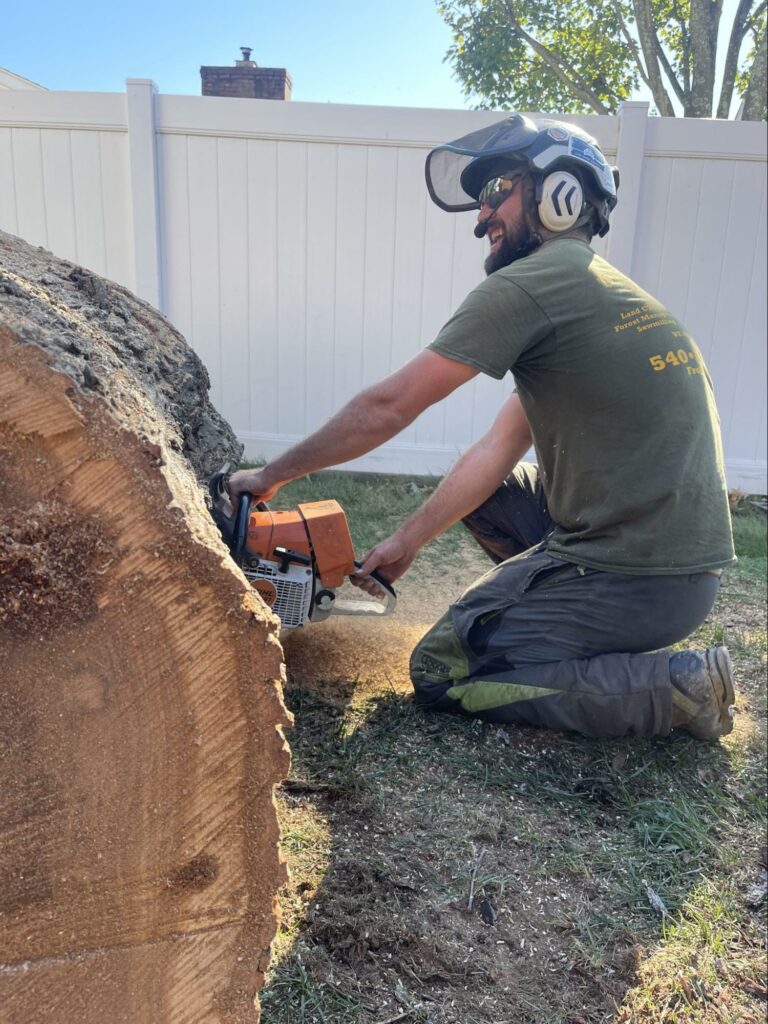
Alongside their essential role in our environment, trees are fascinating organisms that come in diverse forms. Learning how to identify trees can deepen your appreciation for nature and even help with wildlife habitat improvement programs. You can also build your sense of each species’ quirks and care needs—when they bloom, how much water they require, the wildlife they attract, and more.
In this beginner’s guide, we’ll explore simple techniques and key characteristics to help you identify trees confidently:
1. Start with the Basics
Before diving into specific leaf shapes or bark features, study the terminology of tree anatomy used for identification. Ensure you understand common tree care terms like crown, deciduous, evergreen, flowers, fruit, and trunk. The value of these foundations—and their influence on tree service costs and features—cannot be overstated.
2. Inspect the Leaves
Leaves are among the most distinctive features of a tree and provide valuable clues for identification. Their size, shape, arrangement, texture, and color are critical identifying features. Are the leaves simple or compound shapes? Do they have smooth edges or serrations? Are they arranged opposite each other or alternately along the tree branches?
Determining common leaf shapes and conditions can also help with basic tree care. Skeleton leaves’ presence during spring can signal an unhealthy or dying tree.
3. Examine the Bark
As with leaves, tree bark varies widely among different species and can offer valuable insights. Note the bark’s color, texture, and pattern: is it rough, smooth, peeling, or furrowed? Bark characteristics can change with the tree’s age, so observe young and mature specimens if possible. Also, note whether a tree sheds bark excessively, which can signal health problems.
4. Look at the Tree Branches and Twigs
Branching patterns and twig characteristics can also aid in identification. Pay attention to the branches’ arrangement: are they opposite or alternate? Note the color, texture, and presence of buds or leaf scars on the twigs. Besides species identification, professionals use branch types and layouts to determine specific tree species pruning techniques.
5. Study the Flowers and Fruits
Given that many trees grow none, the mere presence of flowers and fruits is a significant detail. However, flowers’ color, shape, size, and arrangement can help with tree identification. Similarly, observe the type, color, shape, and distribution of fruits or seeds for further indicators.
6. Consider the Overall Tree Shape
A tree’s overall shape and silhouette, often called its habit, can provide valuable clues for identification. Is the tree tall and narrow, or does it have a spreading canopy? Does it have a conical shape, a rounded crown, or a weeping form? Tree shape identification is easier with routinely trimmed trees, while those left to grow unregulated will have less defined forms.
7. Use Field Guides and Identification Apps
Field guides and tree identification mobile apps are valuable resources, especially for beginners. Look for guides specific to your region or consult digital resources that provide detailed descriptions, photos, and identification keys. Furthermore, take notes of tree features to compare your findings with tree categorizations.
8. Seek Expert Help
If you cannot identify a tree, don’t hesitate to seek help from Timber Works Tree Care’s certified arborists and service professionals. They can offer valuable insights and help you refine your identification skills.
Tree Care and Wildlife Habitat Improvement Available in Front Royal, VA!
Studying and observing trees’ characteristics (including leaves, bark, branches, flowers, fruits, and overall shape) can help you learn about the trees and wildlife around you. Moreover, Front Royal, VA, residents can turn to Timber Works Tree Care experts, who use their tree care knowledge for wildlife habitat improvement activities. Our full suite of tree services allows homeowners to maintain their properties’ natural beauty. Call (540) 254-5773 today to learn more and ask about a free tree project consultation!
The post A Beginner’s Guide: How to Identify Trees first appeared on Timber Works Tree Care.